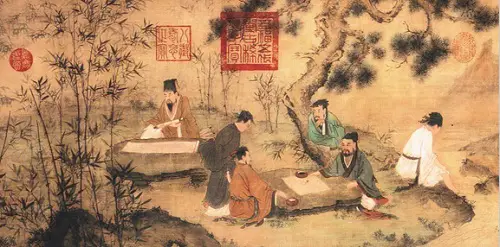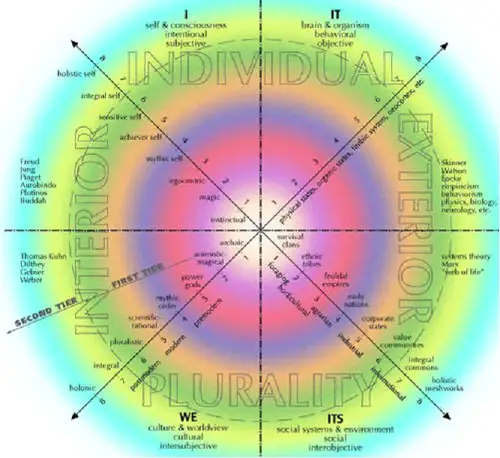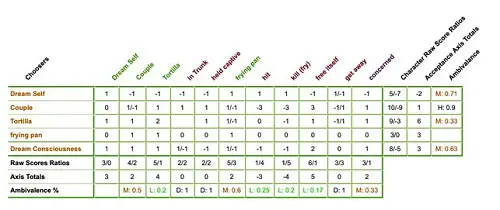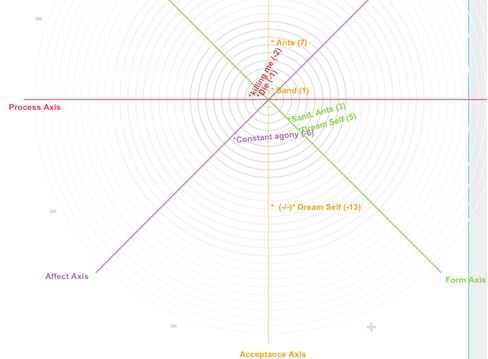|
TRANSLATE THIS ARTICLE
Integral World: Exploring Theories of Everything
An independent forum for a critical discussion of the integral philosophy of Ken Wilber
 Dr. Joseph Dillard is a psychotherapist with over forty year's clinical experience treating individual, couple, and family issues. Dr. Dillard also has extensive experience with pain management and meditation training. The creator of Integral Deep Listening (IDL), Dr. Dillard is the author of over ten books on IDL, dreaming, nightmares, and meditation. He lives in Berlin, Germany. See: integraldeeplistening.com and his YouTube channel. He can be contacted at: [email protected] Dr. Joseph Dillard is a psychotherapist with over forty year's clinical experience treating individual, couple, and family issues. Dr. Dillard also has extensive experience with pain management and meditation training. The creator of Integral Deep Listening (IDL), Dr. Dillard is the author of over ten books on IDL, dreaming, nightmares, and meditation. He lives in Berlin, Germany. See: integraldeeplistening.com and his YouTube channel. He can be contacted at: [email protected]
SEE MORE ESSAYS WRITTEN BY JOSEPH DILLARD  Chinese Humanism, Integral AQAL, and Integral Deep ListeningChina's Contribution to an Integral World View, Part OneJoseph Dillard
Why is China rising while the US, and possibly the West, declining? What do we have to learn from China?
The response of the US to the rise of China has been a combination of denial, fear, and attack, manifested by sanctions, tariffs, a forward military posture, and a world-wide propaganda campaign that has to date succeeded in convincing some 66% of US citizens that China is a threat, in a growing tsunami of Sinophobia. At the same time, knowledge about China, its history, culture, and world view is largely limited to endlessly repeated bromides: China is communist, authoritarian, its people lack personal freedom, and it persecutes both dissenters and minorities. It is almost impossible to note the strengths and successes of China without being labeled a communist or a “useful idiot.” But ad hominem attacks, besides being logical fallacies, do nothing to understand, much less address, the genuine strengths of China. Since 2014 China has surpassed the US in PPP (purchasing power parity) and is expected to surpass the US in GDP before 2025. Both industrial and agricultural sectors of China are well ahead of the US and it is implementing an ambitious plan to surpass the US in chip making and other computer technologies by 2025. Judging by test results and IQ, the Chinese have a better educational system than the US. With four times the population of the US, to date China has lost fewer than 5000 citizens to coronavirus while the US has lost over 120,000, implying a far superior health system and government response to the crisis. If protection of citizens from threat is a fundamental rationalization and justification for the existence of government, Chinese citizens are much more supportive of their government than US citizens are of theirs. Why is China rising while the US, and possibly the West, declining? What do we have to learn from China? The following essay is an attempt to provide both a philosophical and cultural context in order to better understand the foundations of the Chinese world view while, at the same time, exploring the relationships of some of its assumptions to Integral AQAL and to one specific application of it, Integral Deep Listening. Comparing and Contrasting Western and Chinese Humanism“Humanism,” here refers to an emphasis on the value of humans as individuals and as collectives, in contrast to prioritizing some other set of objectives, such as the acquisition of wealth, power, or status. It also implies a secular and inclusive grounding, as opposed to a spiritual and exceptional one. Chinese humanism refers to an Asian world view that is largely descended from the teachings of Master K'ung, or Confucius, from about 500 BCE, which emphasizes the inherent goodness of humanity, the value of human life, secular relationships, good governance, and education.[1] Integral AQAL refers to a multi-perspectival, transpersonally-centered model of self-development developed by Ken Wilber. Integral Deep Listening (IDL) is a dream yoga, therapeutic modality, and phenomenologically-based, experiential multi-perspectival world view developed by Joseph Dillard.[2] These foci together help to throw light on paradigm-transforming forces that are intersecting in 2020, in the Age of Coronavirus. Western societies are bifurcating into groups of libertarians who believe the danger of coronavirus is outrageously exaggerated and a manifestation of one or more conspiracy theory, at the expense of individual freedoms and rights, on the one hand, and those who fear coronavirus and trust both medical science and governmental precautions and restrictions, on the other. A massive eclipse of Western influence and values is occurring due to the confluence of multiple factors of which coronavirus is only one. The US is disoriented and reactive, striking out in multiple directions like a blinded cobra. Sinophobia is being stoked by the US Deep State, conservatives and progressives alike, demonstrating worrying symptoms of CDS. China Derangement Syndrome is a desperate attempt to change the narrative from US failings in managing the crisis, the unraveling of neoliberalism, and the ongoing collapse of the predominance of the West. This trifecta of chaos has now been amplified with a race war, which is actually a revolt of the majority have-nots against the plutocratic global elites. A broad-based societal collapse is underway. No one knows, at this point, when the bottom will be reached, how society will adapt, or how those countries most affected will reconstitute themselves. Despite the probability of a second wave of coronavirus, Chinese society and economy are already in the process of recovery due to China's quick and severe response, while that of the US and some other Western nations have prematurely reopened after sustaining massive losses (over 120,000 in the US and over 41,000 in the UK as of the middle of June, 2020). Instead of remaining stuck in hubris and denial, the first of the five stages of grief elucidated by psychiatrist Elizabeth Kubler-Ross, it would appear wise to enquire as to why and how China is becoming the foremost world power. It is impossible to entitle this essay, “Chinese Religion, Integral AQAL, and Integral Deep Listening,” because China never differentiated religion from culture. Beginning with the Jesuits in 1579, Christianity could never gain a lasting toehold in China because there was little about the dominant culture, with its emphasis on moral perfection in a secular humanistic framing, that was amenable to acceptance of a doctrine of spiritual salvation. Therefore, Christianity won relatively few conversions and Jesuit visitors in the 16th and 17th centuries came away impressed with the sophistication and internal coherence of Chinese culture and society. Although other religious traditions have been influential in China, Chinese humanism is primarily composed of four main traditions: Chinese folk rituals, which are a mixture of shamanism and Buddhism, Taoism, and Confucianism. The spiritual outlook of most Chinese people traditionally consists of some combination of beliefs and practices from these four traditions. Buddhism itself had a very widespread and powerful expression in China from 200 BC, probably due to its philosophical and atheistic nature, which was compatible with Chinese humanism, until a persecution in the Tang dynasty in 845 AD led to the almost complete eradication of Buddhism from China. Therefore, outside of Chinese folk traditions, Buddhism has not been a major influence in China for centuries, primarily because Chinese society and culture continuously reverts to its humanistic roots. To approach Chinese cultural traditions from the perspective of dream yoga raises some interesting questions. Did the Chinese consider life to be dreamlike? If so, when and how? What sorts of yogic practices did the Chinese use to “wake up? To what extent were the Chinese interested in waking up in dreams? The short answer to these questions is that life, for Chinese, is very much embedded in family and its relationship to governance and nature. All of these relationships are naturalistic and sensory; they are hardly dreamlike, with the exception of aspects of Taoism, as we shall see. While Western humanism emphasizes individual liberties and rights, Chinese humanism emphasizes personal perfection for the good of family, state, and natural collectives. While the former emphasizes freedom, the latter emphasizes responsibility and obedience. Western humanism takes the form of collectivist actions and institutions to protect the individual, such as protests, unions, and the Bill of Rights, while Chinese humanism manifests as individual actions and institutions designed to protect the collective, such as social ritual, observance of social hierarchies, obedience, and meritocracy. While Western humanism was a rational and secular reaction to pre-rational, absolutist, and religious culture, society, and religion, Chinese humanism was organic and not reactive. As a result, it has a degree of deep-seated authenticity that reactive world views find difficult to sustain. Indeed, this is validated not only by the multi-millennial influence of Chinese humanism but by its continued existence within the current communist-socialist-capitalist Chinese governmental structure and in contrast to the ongoing collapse of major elements of Western humanism and neoliberal economics. Among the various schools of Chinese thought, the teachings of Master K'ung, called “Confucianism,” is particularly overlooked and minimized by the philosophical, psychological, spiritual, and of course, the political traditions of the West, perhaps because Confucianism may seem arcane, abstract, and largely irrelevant to those things that are of concern to Westerners. This largely reflects the smug, self-assured exceptionalism which is often observed by non-westerners as a component of the Western mind. This might be thought of as a form of proventialism, understandable when we remember that the United States is less than three hundred years old and modernism in the West is only about four hundred years old - early adolescence in comparison to China. This may in itself go a long way toward explaining the basic oppositional defiant Western reaction to the rise of China. If Westerners want to understand why China continues to surpass the West in almost every metric, it might be worthwhile to give these concepts, largely ignored by Integral AQAL and western spirituality and governance, a deeper investigation.[3] Of course, the mentality in the West is currently so pre-conceived that any attempt to provide objectivity or balance regarding China is heard as supporting authoritarianism, communism, and the oppression of liberties. The narratives hammering home these themes has been relentless during my entire lifetime and it has only gotten worse in the last two years. This represents a shutting down of dialogue, of objectivity, and an unwillingness to learn from the strengths of one's assumed opponent. The strengths of the Chinese world view are indeed significant, and it is winning a massive civilizational collision. The West can either learn from the China how to adjust and adapt to this reality, or maintain denial and reactivity, which will only serve to hasten its demise.
Chinese Humanism and Integral AQAL
Integral AQAL essentially ignores China and Chinese humanism. Its multi-perspectivalism fails when it comes to assessing and integrating three thousand years of Chinese philosophy, history, and world view. In this regard, Integral AQAL is quintessentially Western, because while the West has been able to assimilate Indian-based world views into its own, largely through the New Age tradition from Blavatsky, Gurdjieff, Vivikananda, Yogananda, Aurobindo, Hudson, Suzuki, Watts, Jung, and Thurman, it is impossible to come up with a comparable list of names of influences integrating Chinese humanism into Western world views. Those scholars best known as expositors of Chinese humanism have never caught fire in the popular imagination in any way that approaches the magnitude and influence of the interpreters of Indian world views, including Japanese Zen, which is derived from same, via Chinese Chan. The assimilation of Indian philosophy and religion into Western psychological and spiritual traditions is due to a common emphasis on self-development, personal enlightenment and individual relationships between humans and their conception of deity, with collective services, rituals, and observances focused on supporting individual redemption and salvation. Intelligence and wisdom are core values respected by the West since Socrates and Plato, and they dovetail neatly with Indian religion emphasis on prajna, wisdom, and escape from avidya, ignorance. Integral AQAL, as a child of Indian spirituality and mysticism combined with Western psychology and philosophy, emphasizes self-development, empowerment, actualization, and enlightenment and embraces Western humanism in the service of the expansion of the depth and breadth of individual consciousness in the upper left holonic quadrant of individual, interior experience. While the Western monotheisms emphasize sin and salvation as a core dynamic and Indian religions emphasize ignorance and wisdom, Chinese humanism has little interest in interior consciousness and states as forms of individual progress, evolution, and enlightenment, and instead emphasizes a dynamic of chaos and harmony. Interiors are, for Chinese humanism, much more about the lower left quadrant of collective values, and how to perfect them so as to become someone worth imitation by others in order to bring stability and harmony to relationships between others and Heaven and Earth. There is no reason why Integral cannot itself evolve so as to incorporate Chinese humanism, and one way of understanding this essay is as an effort to encourage exactly that development. Another fundamental aspect of Integral AQAL is its identification of societies and organizations, as well as individuals, in terms of their overall level of development. Wilber provides nine primary stages, pre, mid, and late prepersonal, personal, and transpersonal, and two “semi” stages or levels, vision-logic, between late personal and early transpersonal, and non-dual, a non-stage beyond late transpersonal. In this model, a psychograph of Chinese culture would center around an early personal level of development, where the self finds its sense of identity within collectives or groups rather than within itself. This analysis is one reason Integral AQAL largely ignores Chinese sacred traditions. With the exception of Taoism and Buddhist Chan, it views India has having much stronger mystical and transpersonal traditions. While there are indeed many authentic early personal aspects of Chinese culture, Integral AQAL ignores, leaves out, or minimizes a critical component that also determines overall level, and that is the Chinese understanding and practice of morality. Clearly, China is historically autocratic, with a long history of feudalism, destructive class distinctions, and harsh punishment. However, the practice of individual morality can and does take place relatively separated from civilizational norms. If I show you respect you are likely to hold me in esteem and reciprocate; if I disrespect you, you are likely to disrespect me, and this principle holds true across all developmental levels. Therefore, the principle of jen, as a normative ideal within society, taken seriously enough to be taught and a condition of admission to governmental administrative service, complicates the assessment of level of development of Chinese culture. It creates an ambiguous picture. We can look at general practices and conclude Chinese society has largely been bronze age feudalism; we can look at the formal, official, and widely taught normative code regulating interpersonal relationships and recognize an underlying flexibility that serves well within any and all levels. Throughout this essay references to this or that quadrant of individual and collective holons are mentioned. This is another Integral AQAL concept, a heuristic that supports a balanced and inclusive analysis of whatever the current object of investigation may be. It is based on the recognition that all wholes contain parts, and everything is a part of a greater whole, hence holon. Holons have at least four fundamental aspects, interiors cannot exist without exteriors and individuals cannot exist without collectives. The reverse is equally true: exteriors cannot exist without interiors and collectives cannot exist without individuals. These realities create four “perspectives,” an interior individual, interior collective, exterior individual, and exterior collective. The interior individual perspective (upper left or UL), is the realm of “private” experience unless disclosed, including thoughts, feelings, and states of consciousness. It is the domain of self-development. The interior collective perspective (lower left or LL), is the domain of interior but collective experience - shared values, interpretations, perspectives, and world views. It is the realm of “intersubjective” culture. The exterior individual quadrant, (upper right or UR), is the realm of objectively observable behavior, whether of cells, animals, humans, or galaxies. It is the realm of the “hard” sciences - physics, chemistry, physiology, anatomy. The exterior collective quadrant, (lower right or LR), is the domain of “interobjective” relationships, whether of individuals or entire systems, whether organic, organizational and societal, or cosmic. It is the domain of objectively observable collective behavior, including social justice and normative behavior.  While Integral AQAL considers all four quadrants, due to its emphasis on consciousness, spirituality, and self-development, it emphasizes or is centered in the interior individual quadrant while Chinese culture, and particularly its humanism, is centered in the exterior collective quadrant, meaning that they are opposites in many respects. Western socio-cultural civilization as a whole tends to emphasize individual achievement and progress over collective solidarity. Therefore, both the specific lens of Integral AQAL and the broader context in which it is embedded tend to frame China and Chinese culture in terms that are foreign to it. This is a bias that is difficult to escape or neutralize, but being aware of it is a first step toward a more objective assessment of China. Integral AQAL and IDLWhile Integral AQAL is a cognitive multi-perspectivalism, that is, a map of the territory of life, IDL is an experiential as well as a cognitive multi-perspectivalism. It accepts many, even most of the contributions of Wilber's integral map, and adds experiential multi-perspectivalism through the interviewing of multiple imaginary elements, including dream characters and the personifications of life issues, such as a fire that personifies a back pain or the locomotive that is pulling one's “train of thought.” The purpose is to access perspectives that point toward priorities intrinsic to our individual life compass and to our collective evolutionary autopoiesis, both of which transcend and include the waking priorities that normally direct integral life practices and waking/dreaming decision-making, moving us from psychological geocentrism toward a polycentrism that more closely approximates the cosmos as revealed by science. Deep listening is a manifestation of the lower left value of respect, which IDL views as fundamental to lower right interpersonal relationships and behavioral ethics. IDL superficially resembles shadow work and is easily confused with it. Two articles address these similarities and differences, “The Shadow, Carl Jung, and Integral Deep Listening” (2017), and “Problematic Aspects of Wilber's 3-2-1- Shadow Work” (2017). IDL does not assume interviewed perspectives are either self-aspects or objective others. As a phenomenologically-based framing it drops such assumptions. As an experientially-based form of multi-perspectivalism it emphasizes embodiment in all four quadrants. Various articles on the relationship between Integral AQAL and IDL can be found on IntegralWorld.Com under my name, in particular, "Assumptions of Integral Dream Analysis", Dec. 2019. and in part II of Dillard, J., Healing Integral. Berlin, Deep Listening Publishing, 2017. Information about IDL is available at two sites, DreamYoga.Com and IntegralDeepListening.Com. Articles specifically related to the relationship between Integral AQAL and IDL include: Ken Wilber's Integral AQAL and Integral Deep Listening; and Wilber's Integral AQAL; Review of Wilber's “Integral Spirituality,” Theories of Art Criticism and Dream Interpretation; A Review of Ken Wilber's Integral Life Practice. IDL interviewing protocols, both for interviewing one character or several, using Dream Sociometry, are available here. Descriptions of the various interviewing formats are available at IntegralDeepListening.Com. 
Dream sociomatrix

Dream Sociogram
Dream Sociometry explains the construction and rationality of the methodology while Understanding the Dream Sociogram explains how to interpret Dream Sociograms, which are snapshots of intrasocial multi-perspectival dynamics.[4] Chinese Humanism and IDLIn contradistinction to spirituality, psychology, and classical phenomenology, both emphasize the collective over self-development and relationship over autonomy. Both view service to others, as one's greater self, as a superior approach to personal development. Both are experiential, emphasizing here and now experience rather than future or alternative states of consciousness. Both emphasize the rational over the transpersonal, because the transpersonal is regularly found to be the prepersonal mistakenly identified as the transpersonal, and because anything that claims transpersonal status, other than a state, has to be able to demonstrate that it first passes rational criteria. Both emphasize excellence in the service of balance rather than excellence as an end in itself, are pragmatic in orientation and relatively non-sectarian. Both emphasize morality over cognition, in that the moral line leads, not the cognitive line. Both are essentially and essentially non-religious and even non/spiritual, without being materialistic, in that both emphasize a profound sense of the sacred. As we shall see, there are definite and strong differences between Chinese humanism and IDL as well. NOTES[1] Writing about any foreign culture is inherently problematic, but when it is as distant and foreign as historical China is from the world views, scriptings, and assumptions ingrained in the mindset of Westerners, it is particularly difficult. There are layers and generations of expositors, translators, and interpreters between original sources and what I have written here. Therefore, I have no illusions that I am presenting an accurate picture of China, either on its distant past or of today, but only sharing some of what I have read as well as some associations that make sense to me and are helpful. I recommend the reader approach this essay with caution, check out for themselves what is written here, and use what is found useful to bridge to his or her own areas of interest. [2] For more information regarding Integral Deep Listening, see IntegralDeepListening.Com and DreamYoga.Com. [3] The US continues to widely lead China in the services sector of economies and far outspends China militarily. However, “almost every metric” is not an exaggeration. For a fact-based education on that reality I recommend a series of essays by Godfree Roberts, as well as an investigation of the comments following each essay and his responses to them. [4] Dillard, J. (2018) Dream Sociometry. London: Routledge. Dillard, J. (2018) Understanding the Dream Sociogram. London: Routledge.
|